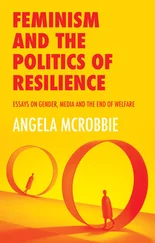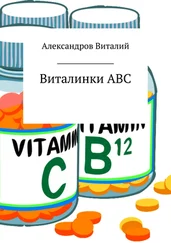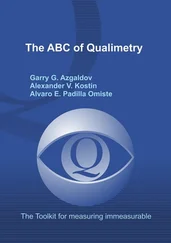1 Cover
2 Title Page ABC of Clinical Resilience EDITED BY Anna Frain University of Nottingham Nottingham, UK Sue Murphy University of British Columbia Vancouver, Canada John Frain University of Nottingham Nottingham, UK
3 Copyright Page
4 Contributors
5 Preface
6 CHAPTER 1: Why resilience? Why now? Introduction ‘First, do no harm’ Increasing patient expectations, complaints and litigation Why now? Equality, diversity and inclusion in healthcare resilience Conclusion Further reading/resources
7 CHAPTER 2: Emotional Impact of Working in Healthcare Introduction The cost of caring Burnout Moral distress Compassion fatigue Vicarious trauma Effects of erosion of empathy, compassion and disengagement Disengagement Media reports on healthcare The joy of practice Compassion satisfaction Empathy Reducing risk and burnout Conclusions Further reading/resources
8 CHAPTER 3: Resilience and Cognitive Performance Introduction Clinical reasoning Biases and contextual factors Burnout and cognitive function The negativity bias Effect of experience Training needs Conclusions Further reading/resources
9 CHAPTER 4: Practising Self‐care Introduction Self‐aware not self‐critical Resilience through the career cycle The healthcare student The first five years of qualification The established clinician The last five years Conclusions Further reading/resources
10 CHAPTER 5: The Physiology of Resilience and Well‐being Introduction The physiology of stress and well‐being The physiological impact of stress today ‘Challenge stress’ versus ‘threat stress’ Measuring stress and well‐being: heart rate variability and coherence Cortical inhibition and facilitation Making a shift: influencing HRV and coherence The physiology of emotion Becoming aware of a perception change Making the shift back to well‐being Conclusion Further reading/resources
11 CHAPTER 6: Intelligent Kindness: A Systemic Perspective on Resilience Resilience and recovery – definitions and questions Reflection and self‐care The emotional costs of caring Kinship A therapeutic alliance The benefits of compassion and kindness Cultivating intelligent kindness Factors that undermine the work A healthy ‘relational’ system Conclusion Further reading/resources
12 CHAPTER 7: Kindness in Healthcare Teams Introduction Kindness in teams Bullying in the workplace and the toxic individual Conclusion References Further reading/resources Websites
13 CHAPTER 8: Organisational Kindness Introduction The effects of moral injury Levels of organisational kindness Improving joy at work Conclusions Further reading/resources
14 CHAPTER 9: Resilience in Practice Introduction Individual resilience and practice What is 'team resilience'? The impact on patient care Hierarchy and conflict The student experience Perception vs intention: bridging the interpersonal gap Most respectful interpretation Moral courage and psychological safety in teams Conclusion Further reading/ resources
15 CHAPTER 10: Can We Really Teach Resilience, Intelligent Kindness and Compassion? Introduction Personal factors Interpersonal factors Contextual/environmental factors Developing the curriculum Assessment of resilience Conclusion Further reading/ resources
16 Recommended Books, Articles and WebsitesFor students and teachers Academic Websites (all accessed November 2020)
17 Index
18 End User License Agreement
1 Chapter 3Table 3.1 Characteristics of Type 1 and Type 2 thinking.Table 3.2 Examples of cognitive errors (bias) in clinical reasoning.Table 3.3 Contextual factors relevant to clinical decision‐making and patient...Table 3.4 Strategies for improving tolerance of uncertainty in decision‐makin...
2 Chapter 4Table 4.1 Self‐criticism versus self‐awareness.Table 4.2 Summary of positive and negative coping strategies throughout a car...Table 4.3 The last five years.Table 4.4 A systematic review of physician retirement planning.
1 Chapter 1 Figure 1.1 Change in reason for leaving given by staff (for voluntary resign...
2 Chapter 2 Figure 2.1 Conceptual model of compassion satisfaction.
3 Chapter 3Figure 3.1 A modified universal model of diagnostic reasoning.Figure 3.2 Situated cognition as a framework for context within a sample cli...Figure 3.3 Hierarchy of needs for optimal clinical decision‐making.
4 Chapter 4Figure 4.1 Self‐care checklistFigure 4.2 Wheel of wellness, Cooper N. (2020).
5 Chapter 5Figure 5.1 How the Autonomic Nervous System (ANS) innervates and influences ...Figure 5.2 Activation of the hypothalamic–pituitary–adrenal (HPA) axis under...Figure 5.3 The relationship between challenge and performance.Figure 5.4 The relationship between heart rate (HR) and heart rate variabili...Figure 5.5 Incoherent versus coherence heart rhythms.Figure 5.6 How heart rhythms influence cortical activity.Figure 5.7 The relationship between emotions and physiology.Figure 5.8 The physiological relationship between thoughts and behaviours....Figure 5.9 Improvements in students using regular self‐regulation techniques...Figure 5.10 HRV tracing capturing Sarah’s stressful moment.
6 Chapter 6Figure 6.1 A Therapeutic Alliance.Figure 6.2 The task and role system.Figure 6.3 The ‘kinship’ or relational system.
7 Chapter 7Figure 7.1 Incivility the facts poster.
8 Chapter 8Figure 8.1 Maslach Burnout Inventory (MBI).Figure 8.2 Moral injury: the challenge of simultaneously knowing what is rig...Figure 8.3 General Medical Council Duties of a Doctor.Figure 8.4 Four levels of change.Figure 8.5 The price of incivility.Figure 8.6 Herzberg’s hygiene factors and motivators.Figure 8.7 Four steps for leaders.Figure 8.8 A practical example of improving joy at work: redesigning junior ...
9 Chapter 9Figure 9.1 Why team‐based care?Figure 9.2 The cycle of diminishing resilience.Figure 9.3 The interpersonal gap.
10 Chapter 10Figure 10.1 Visual presentation of interrelated factors influencing resilien...
1 Cover Page
2 Title Page ABC of Clinical Resilience EDITED BY Anna Frain University of Nottingham Nottingham, UK Sue Murphy University of British Columbia Vancouver, Canada John Frain University of Nottingham Nottingham, UK
3 Copyright Page
4 Contributors
5 Preface
6 Table of Contents
7 Begin Reading
8 Recommended Books, Articles and Websites
9 Index
10 WILEY END USER LICENSE AGREEMENT
1 iii
2 iv
3 vii
4 ix
5 1
6 2
7 3
8 4
9 5
10 7
11 8
12 9
13 10
14 11
15 12
16 13
17 15
18 16
19 17
20 18
21 19
22 20
23 21
24 22
25 23
26 24
27 25
28 26
29 27
30 29
31 30
32 31
33 32
34 33
35 34
36 35
37 36
38 37
39 39
40 40
41 41
42 42
43 43
44 44
45 45
46 46
47 47
48 48
49 49
50 50
51 51
52 52
53 53
54 54
55 55
56 56
57 57
58 58
59 59
60 60
61 61
62 62
63 63
64 64
65 65
66 66
67 67
68 68
69 69
70 70
71 71
72 72
73 73
74 75
75 76
76 77
ABC of Clinical Resilience
EDITED BY
Anna Frain
University of Nottingham
Nottingham, UK
Sue Murphy
University of British Columbia
Vancouver, Canada
John Frain
University of Nottingham
Читать дальше












